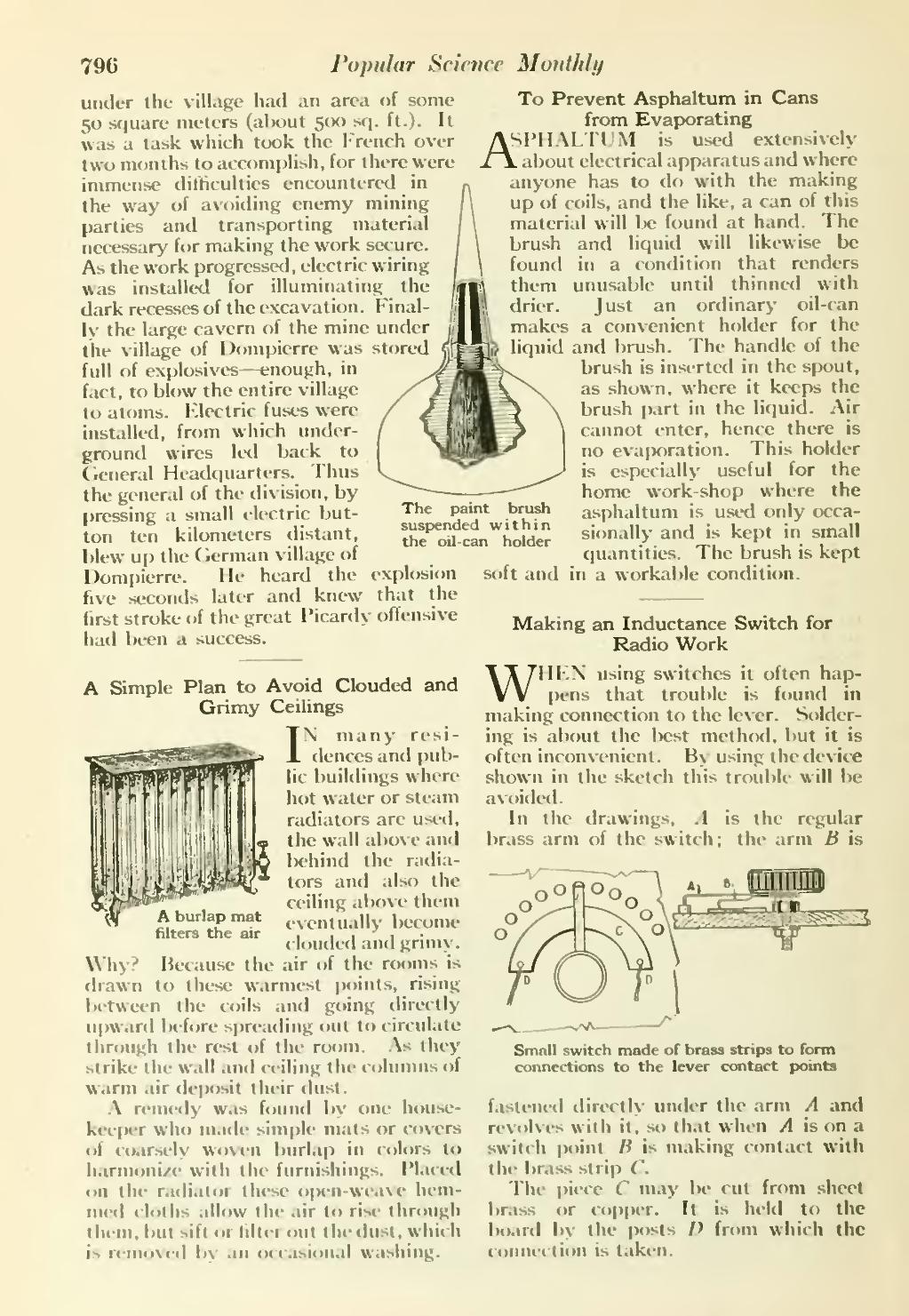796
��Popular Science MuJttJily
��under the village had an area of some 50 square meters (about 500 sfj. ft.). It was a task which took the French over two months to accomplish, for there were immense difficulties encountered in the way of avoiding enemy mining parties and transporting material necessary for making the work secure. As the work progressed, electric wiring was installed for illuminating the dark recesses of the excavation. Final- ly the large cavern of the mine under the village of Dompierre was stored full of explosives — enough, in fact, to blow the entire village to atoms. Electric fuses were installed, from which under- ground wires led back to General Headquarters. Thus the general of the division, by pressing a small electric but- ton ten kilometers distant, blew up the German village of Dompierre. He heard the five seconds later and knew first stroke of the great Picardy offensive had been a success.
��A^
���The paint brush suspended within the oil-can holder
��explosion that the
��To Prevent Asphaltum in Cans
from Evaporating SPH.'XLTLIM is used extensively about electrical apparatus and where anyone has to do with the making up of coils, and the like, a can of this material will be found at hand. The brush and liquid will likewise be found in a condition that renders them unusable until thinned with drier. Just an ordinary oil-can makes a convenient holder for the liquid and brush. The handle of the brush is inserted in the spout, as shown, where it keeps the brush part in the liquid. Air cannot enter, hence there is no evaporation. This holder is especially useful for the home work-shop where the asphaltum is used only occa- sionally and is kept in small tiuantities. The brush is kept n a workable condition.
��soft and
��Making an Inductance Switch for Radio Work
���r
��I lap mat niters the air
��A Simple Plan to Avoid Clouded and Grimy Ceilings
" i\' many resi- dences and pub- lic buildings where hot water or steam radiators are used, the wall abo\e and behind the radia- tors and also the ceiling al)ove them e\entually become clouded and grinn-. Why? Because the air of the rooms is drawn to these warmest points, rising between the coils and going directly ujiward before spreading out to circulate through the rest of the room. As they strike the wall and ceiling the colunms of warm air deposit their dust.
A remedy was found by one house- keeper who made simple mats or covers of coarsely woven l)urla|) in colors to harmonize with the furnishings. Placed on the radiator these opcn-wea\e hem- med ilollis allow the air to rise through them, but sift or filter out the dust, which is remov<'d by an occasional washing.
��w
��WES using switches it often hap- pens that trouble is found in making coiuiection to the lever. Solder- ing is about the best method, but it is often inconvenient. By using the device shown in the sketcit this trouble will be avoided.
In the drawings, A is the regular brass arm of the switch; the arm B is
���Small switch made of brass strips to form connections to the lever contact points
fastened dircctK' under the arm A and re\'oKes with it, so that when A is on a switch point li is making contact with the brass strip C.
The piece C may be cut from sheet brass or copper. It is held to the board by the posts D from which the comiection is taken.
�� �
